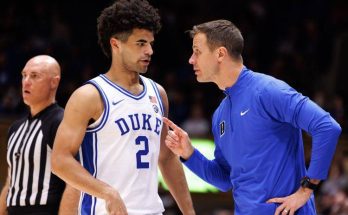Stephen Curry: Here’s Why NBA Players Are “Underpaid.”
Stephen Curry, one of the most influential and highest-earning NBA stars of his generation, recently sparked a conversation by stating that NBA players are “underpaid.” At first glance, this may sound counterintuitive to many given the multimillion-dollar contracts and lucrative endorsement deals players secure. However, Curry’s perspective reflects a deeper understanding of the economics, demands, and realities of professional basketball that often go unnoticed by casual fans and the broader public. To explore why NBA players might be considered underpaid, it is essential to delve into several layers: the intense physical and mental toll of the sport, the revenue distribution in the NBA, the relatively short career spans of players, the risk of injury, the off-court pressures, and the broader context of labor and compensation in professional sports.
The life of an NBA player is far more demanding than what the glitz and glamour suggest. While fans see the highlight reels and dazzling performances, they rarely appreciate the years of grueling preparation, the physical wear and tear, and the mental stress that come with playing at such a high level. Training camps, rigorous practice schedules, travel demands, and constant competition for roster spots create an environment of relentless pressure. Players must maintain peak physical condition while managing injuries and the risk of chronic pain or long-term health issues. This commitment extends beyond the season itself, with many players dedicating their off-seasons to rehabilitation, skill development, and community engagements. The lifestyle is a relentless grind that few outside the sport truly understand, and in that light, the compensation must be evaluated not just as salary but as remuneration for a demanding career.
The economic structure of the NBA reveals another critical aspect of why players might be considered underpaid. The league generates billions of dollars annually through ticket sales, television rights, merchandise, sponsorships, and international expansion. This vast revenue pool, however, is split between team owners, the league office, staff, and the players. Players typically receive about 50% of basketball-related income according to the collective bargaining agreement (CBA), which is negotiated between the league and the players’ union. While this seems fair, many argue that considering the players are the central product—the very reason the league exists—their share could be higher. Owners and franchises invest in arenas, marketing, and infrastructure, but without players’ talents and performances, there would be no product to monetize. Comparisons with other major sports leagues often show that NBA players’ percentage of revenue is not significantly higher than that in the NFL or MLB, but when factoring in the physical risks and career lengths, the argument grows stronger for more equitable compensation.
Career longevity in the NBA is notoriously short. While a few superstar players enjoy careers spanning 15 years or more, the average NBA career is closer to four to five years. This is due to the combination of intense competition, injuries, evolving team strategies, and the physical demands of the sport. Unlike traditional jobs where experience can lead to long-term security and growing compensation, NBA players face a ticking clock from their rookie contracts onward. They must maximize their earnings in a limited window, often while dealing with the uncertainty of contract renewals, trades, or being cut from the team. This compressed earning timeline puts enormous pressure on players to not only perform at their best but also to manage their finances wisely, plan for life after basketball, and sometimes secure multiple streams of income through endorsements or business ventures.
Injury risk is another critical factor underpinning the claim that NBA players are underpaid. Basketball is a high-contact sport involving rapid movements, jumps, collisions, and repetitive strain. Injuries can range from minor sprains to career-ending damages. Even when players are healthy, the cumulative effect of wear and tear can shorten careers and diminish quality of life post-retirement. Some players experience chronic pain, mobility issues, and long-term health complications due to their professional tenure. While NBA contracts offer substantial compensation, they do not always fully offset the long-term physical consequences that players endure. Medical care, rehabilitation, and insurance provide some protection, but they cannot entirely replace the physical wellness players sacrifice. This inherent risk factor, combined with the pressure to return quickly to play despite injuries, underscores the argument that players’ pay should reflect these occupational hazards more substantially.
Beyond the physical and economic dimensions, NBA players also face considerable mental and emotional stress. The public spotlight subjects them to constant scrutiny regarding performance, personal lives, and social issues. The pressure to maintain peak performance week after week, coupled with travel demands and time away from family, can contribute to mental health challenges like anxiety and depression. Recent years have seen an increasing awareness of mental health in professional sports, with players openly discussing their struggles and advocating for better support. Despite these conversations, the day-to-day mental toll remains substantial and often invisible to fans. The compensation players receive must account for the full scope of their professional burdens—physical, mental, and emotional—which are intertwined and significant.
It is also important to consider the nature of endorsement deals and off-court income in the debate about NBA players’ pay. Stars like Stephen Curry earn tens of millions not only from their NBA salaries but also from endorsements with global brands, personal businesses, and media ventures. However, these opportunities are accessible primarily to a small fraction of players. For many athletes, especially role players and those with shorter careers, the NBA salary itself is the primary source of income. Moreover, endorsements often depend on marketability, media presence, and timing rather than purely on basketball skill. This means that many talented players receive less recognition and fewer financial rewards off the court, which further skews the overall earnings distribution in the league. While the highest-paid superstars may appear to be overcompensated, a broader view reveals a wide pay disparity and financial uncertainty for many players.
Another dimension to this discussion is the comparison between NBA player salaries and the revenues the league generates, as well as wages in other industries. NBA teams can generate hundreds of millions of dollars annually, with top franchises earning upwards of half a billion. Yet the average player salary is around a few million dollars, which, although substantial, may not seem proportionate considering the revenues, the players’ central role, and the economic landscape of modern professional sports. Comparatively, many CEOs of large corporations earn significantly more than NBA players, but the difference is that CEOs often benefit from long-term job security, equity stakes, and fewer physical demands. Players’ pay is often lumped into the “sports celebrity” narrative, where high earnings are normalized, making it harder to appreciate the economic and personal sacrifices involved.
Curry’s comment about NBA players being “underpaid” also resonates in the broader context of how labor is valued in entertainment and sports industries. Athletes are entertainers but also laborers whose physical output is their product. The negotiation between players’ unions and league management mirrors broader labor market dynamics, where workers strive for better wages, benefits, and conditions. The high visibility of sports often obscures the fundamental labor issues that underpin compensation debates. While star players sign enormous contracts, the league’s salary cap system, rookie wage scales, and luxury tax rules shape how money is distributed. Players have limited control over these structures, yet they must accept the terms to participate in the league. This labor market reality reinforces the idea that, despite the appearance of wealth, many players’ compensation may not fully reflect their value or the risks they take.
In conclusion, Stephen Curry’s assertion that NBA players are “underpaid” can be understood through a multifaceted lens. The intense physical and mental demands, career brevity, injury risks, mental health pressures, unequal off-court earning opportunities, and economic structures of the league all contribute to a situation where player compensation, despite its apparent largesse, may fall short of what is fair or sufficient. The broader sports labor market context also highlights systemic factors that limit players’ earning potential relative to the value they create. While star athletes like Curry earn substantial sums, the overall landscape suggests that for many players, the financial rewards do not fully compensate for the sacrifices and risks involved. Understanding this complexity sheds light on ongoing discussions about player pay, labor rights, and the future of professional basketball economics.


